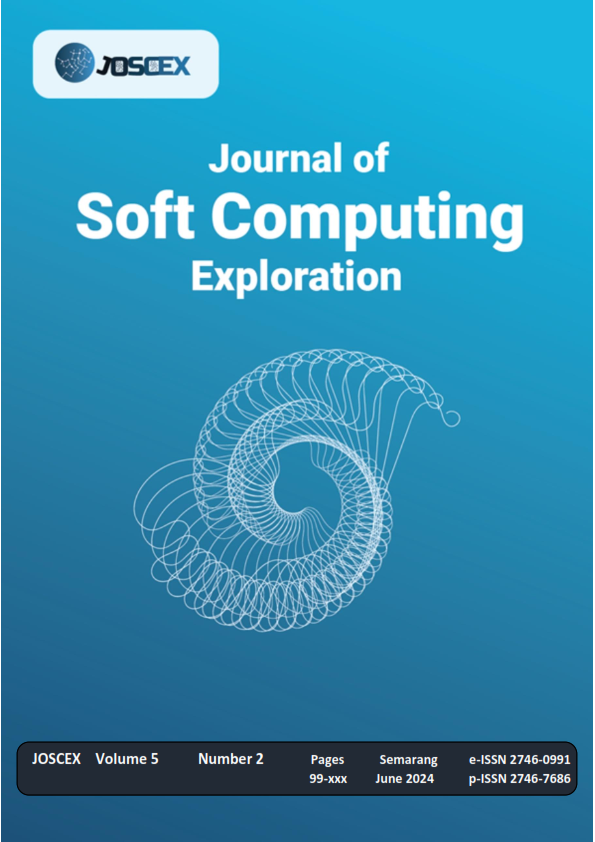Flood early warning system at Jakarta dam using internet of things (IoT)-based real-time fishbone method to support industrial revolution 4.0
Main Article Content
Abstract
This research aims to develop an effective flood early warning system to provide timely information to the public and support the government in disaster management. The Raspberry Pi mini-computer functions as the central control, collecting data from the Water Level Sensor to measure water height, the Ultrasonic Sensor for further monitoring, the DHT11 Sensor to monitor temperature and humidity, and a Buzzer as an audible warning device. The research method involves review of the literature and data acquisition from related journals. These data are utilized to design an Internet of Things (IoT)-based flood detection tool with the Raspberry Pi minicomputer as the main controller. The system can be implemented in vulnerable locations such as reservoirs, sluice gates, and rivers, as part of the Smart City and Smart Environment concepts. The test results indicate that the developed early warning system, integrating the Raspberry Pi minicomputer, the Water Level Sensor, the the Ultrasonic Sensor DHT11 Sensor, and Buzzer, approaches perfection. Real-time information is transmitted through the Twitter social media platform, which is shown to be more effective than manual notifications. The system can provide accurate early warnings, reduce flood-related damages, and positively contribute to flood prevention and disaster management efforts. This research is expected to make a significant contribution to improving the community and government preparedness for future flood disasters.
Downloads
Article Details

This work is licensed under a Creative Commons Attribution-ShareAlike 4.0 International License.
References
S. V. Asmadin, I. Sofian, I. Jaya, dan A. B. Wijanarto, “Monitoring Coastal Inundation of Jakarta using Synthetic Aperture Radar Sentinel 1A,” Proc. SPIE, vol. 11372, 2019.
J. L. Baker, Climate change, disaster risk, and the urban poor: cities building resilience for a changing world. World Bank Publications, 2012.
N. Sugandhi, Supriatna, E. Kusratmoko, dan H. Rakuasa, “Spatial Modeling of Flood Affected Areas of Krukut River in Pela-Mampang Segment, South Jakarta, Indonesia,” vol. 4, no. 11, hal. 4031–4044, 2023, doi: 10.11594/ijmaber.04.11.23.
B. A. Priyambodoho, S. Kure, R. Yagi, dan N. F. Januriyadi, “Flood inundation simulations based on GSMaP satellite rainfall data in Jakarta , Indonesia,” vol. 8, 2021.
E. Saufina, Trismidianto, Risyanto, I. Fathrio, dan W. Harjupa, “Impact of cross equatorial northerly surge (CENS) on Jakarta heavy rainfall and its interaction with tropical cyclone (Case study: 18-25 February 2020),” AIP Conf. Proc., vol. 2366, no. 1, hal. 50002, Sep 2021, doi: 10.1063/5.0059995.
R. Nurjayati dan D. P. P. Mbarep, “Studies on flood disaster causes in DKI Jakarta Province,” IOP Conf. Ser. Earth Environ. Sci., vol. 1266, no. 1, hal. 12053, 2023, doi: 10.1088/1755-1315/1266/1/012053.
M. Reza Fahlevi dan H. Gunawan, “Perancangan Sistem Pendeteksi Banjir Berbasis Internet of Things Design Based Flood Detection System Internet of Things,” IT J., vol. 8, hal. 23–29, 2020.
R. Sulistyowati, H. A. Sujono, dan A. K. Musthofa, “Sistem Pendeteksi Banjir Berbasis Sensor Ultrasonik Dan Mikrokontroler,” Semin. Nas. Sains dan Teknol. Terap., no. January, hal. 49–58, 2015.
D. Satria, S. Yana, R. Munadi, dan S. Syahreza, “Design of Information Monitoring System Flood Based Internet of Things (IoT),” in Proceedings of MICoMS 2017, in Emerald Reach Proceedings Series, vol. 1. Emerald Publishing Limited, 2018, hal. 337–342. doi: 10.1108/978-1-78756-793-1-00072.
S. Ginting dan W. M. Putuhena, “Sistem Peringatan Dini Banjir Jakarta (Jakarta -Flood Early Warning System (J-Fews)),” J. Sumber Daya Air, vol. 10, no. 1, hal. 71–84, 2014.
R. Buyya dan A. V. Dastjerdi, Internet of Things: Principles and Paradigms. New York: Morgan Kaufmann, 2016.
L. P. Vinjamuri, A. Chahar, U. Singh, A. A., dan A. A., “IoT to address challenges of Disaster management- approaches and ideas- a global perspective.,” in 2023 International Conference on Computational Intelligence, Communication Technology and Networking (CICTN), 2023, hal. 265–269. doi: 10.1109/CICTN57981.2023.10141298.
S. Madhura, D. Disha, G. Deepthi, dan B. Chinnitaha, “Disaster Management Based on IoT Enable Monitoring Technique,” IRO Journals, vol. 3, no. 2, hal. 70–80, 2021, doi: https://doi.org/10.36548/JTCSST.2021.2.001.
G. Sharma dan J. E. Lee, “Using IoT in Natural Hazard Management and Future Directions,” JSCM (Journal Saf. Cris. Manag., vol. 12, no. 1, hal. 1–6, 2022, doi: 10.14251/jscm.2022.1.1.
C. R. C. Dasmasela, I. Sembiring, dan H. D. Purnomo, “Sistem Peringatan Dini Rawan Bencana Longsor Di Kota Ambon menggunakan IoT,” J. Sist. Inf. Bisnis, vol. 10, no. 2, hal. 220–227, 2020, doi: 10.21456/vol10iss2pp220-227.
C. K. Gomathy, G. G. L. Priya, dan H. K. K. N, “A Study on IoT Based Flood Detection Management System,” vol. 8958, no. 4, hal. 130–133, 2021, doi: 10.35940/ijeat.D2407.0410421.
M. I. Hadi et al., “Designing Early Warning Flood Detection and Monitoring System via IoT,” IOP Conf. Ser. Earth Environ. Sci., vol. 479, no. 1, hal. 12016, 2020, doi: 10.1088/1755-1315/479/1/012016.
S. P. Windiastik, E. N. Ardhana, dan J. Triono, “PERANCANGAN SISTEM PENDETEKSI BANJIR BERBASIS IOT (INTERNET OF THING)”.
M. Anbarasan et al., “Detection of flood disaster system based on IoT, big data and convolutional deep neural network,” Comput. Commun., vol. 150, hal. 150–157, 2020, doi: https://doi.org/10.1016/j.comcom.2019.11.022.
S. Patil, J. Pisal, A. Patil, S. Ingavale, P. Ayarekar, dan S. Mulla, “A Real Time Solution to Flood Monitoring System using IoT and Wireless Sensor Networks,” Int. Res. J. Eng. Technol., hal. 1807, 2008.
M. I. Malek, R. Nanjiba, dan Z. Nayeem, “Real-Time IoT Based Urban Street Water-Logging Monitoring System Using Google Maps,” IPMV Image Process. Mach. Vis., hal. 100–104, 2020, doi: https://doi.org/10.1145/3421558.3421574.
R. A. Priatim, M. Asri, dan S. Abdussamad, “Rancang Bangun Prototipe Peringatan Dini Banjir Menggunakan Raspberry Pi Berbasis IoT,” Jambura J. Electr. Electron. Eng., vol. 5, no. 2, hal. 216–221, 2023, doi: 10.37905/jjeee.v5i2.19696.

